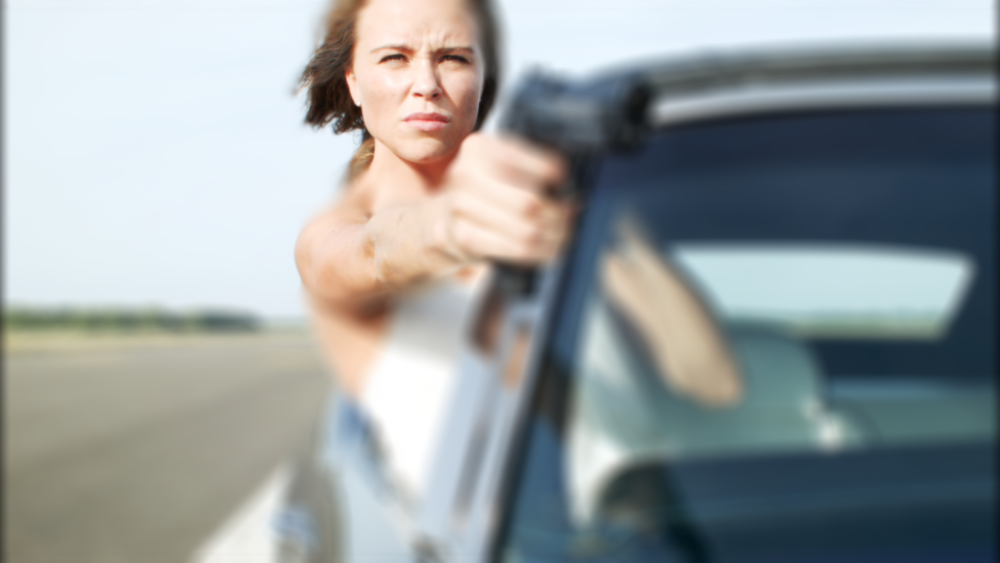The lens blur is designed to more closely mimic the depth of field bokeh effects created by real lenses. It can be used in conjunction with a depth map to selectively blur different areas of the frame to different degrees.
Here’s an example of lens blur in action, followed by the original frame without blur:


Note how the face remains in sharp focus while the rest of the image becomes progressively more blurred. This is based upon a simple depth map created by hand inside HitFilm using some planes and masks:

The circle at the top keeps the face in focus, while the left-to-right gradient oval causes her arm to become progressively more blurred. The rest of the image, being black, is fully blurred.
Lens blur can be heavily customized.
- Source Layer: can be optionally used to apply a depth map, as shown in the example above.
- Source Channel: You can use various channels from the source layer as the depth map, such as luminance and alpha.
- Radius: adjusts the strength of the blur.
- Focal Distance: is used to rack focus based on the depth map, adjusting which point on the map is in focus. This is analogous to changing focus on your camera.
- Focal Range: defines the depth of field. A larger focal range will cause more of the frame to remain in focus, while a small focal range will cause a shallower area to remain in focus.
- Specular Threshold: Sets the luminance level above which highlights will be blown out to white, rendering as specular highlights based on the Iris settings below.
- Specular Brightness: Sets the brightness of the specular highlights. Lower threshold and higher brightness will make the bokeh more obvious. The bokeh shape can be further customized in the Iris section.
- Quality: Defines the visual quality of the blur. If you are trying to match your footage to other footage shot with a lower quality lens, reducing the quality may help. Reducing quality also allows the effect to render more quickly.
- Iris: The iris section can be used to switch between multiple primitive shapes. These can then be rotated and warped using the curvature, pinch and shift options to create custom shapes. The View Iris option can be useful for dialing in the shape of the iris.
- Shape: Select a shape based on the number of blades you wish to be used for the iris. More blades tend to give a smoother blur and higher quality results.
- Rotation: Sets the rotation of the shape selected above.
- Curvature: Sets the curvature of each blade of the iris. A value of 0.0 creates a straight side. Negative values will curve the sides inward, while positive values curve it outward.
- Pinch: Limits the area affected by the curvature. Higher pinch levels will reduce the width of the curve, so it is pinched close to the vertices of the iris shape.
- Shift: Offsets the center of the curvature.
- Opacity Curve: Feathers the edges of the iris shape, from the outer edge and the center.
- Highlight Location: Sets the distance of the circular highlight from the center of the iris.
- View Iris: Enabling this option shows the iris shape in white, so you can see exactly how the adjustments above affect the shape that will be used to render the specular highlights.
